|
 Secure Site
Secure Site
|
 |
Archive for the 'nature' Category
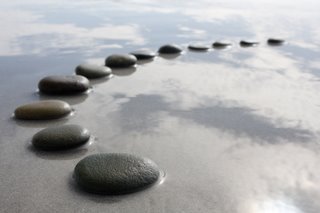 zen stones It’s hard to believe in the sages’ promise of higher consciousness—until that breakthrough moment happens to you. Here, a report from those who’ve been there.
By Deborah Willoughby
Edgar Mitchell was on his way home. Two days before he had been on the moon collecting rock samples, and now he was speeding through space accompanied by two other astronauts. Gazing at Earth and the stars through the tiny window of Apollo 14, he was engulfed by a new and startling sensation: an all-encompassing aura of universal connectedness. All sense of boundaries dissolved, and he saw that he, his companions, and everyone and everything on the shining planet in the window were held in a luminous web of consciousness. What is more, he knew with absolute certainty that, as he put it later, “the glittering cosmos itself was in some way conscious.”
Mitchell was experiencing a spontaneous glimpse of what the sages of the yoga tradition call higher consciousness—a direct, intuitive experience of the infinite field of awareness that underlies and pervades the entire universe. When this experience is fully expanded, different traditions give it different names—samadhi, nirvana, enlightenment, turiya, shunyata, Brahman, Christ Consciousness, Absolute Truth, Atman, God, the Self, Supreme Consciousness—but whatever they call it, spiritual masters tell us that this experience of an all-pervasive consciousness reveals the truth about ourselves and the world we inhabit: it is all One. There is no division, no multiplicity, no separation. Everything—the astonishing variety of living beings; nature’s myriad shapes, textures, and forms; the sun, the stars, the clouds, and the wind in the trees—all of it is a manifestation of an indivisible field of Consciousness. The goal of human life, the sages tell us, is to meet that Consciousness within ourselves and to know ourselves as That.
The sages also tell us all of our problems, indeed all of the world’s problems, can be traced to a single source: we misunderstand the nature of reality. Hypnotized by outward appearances, we misread the world around us. We see multiplicity instead of unity, separation instead of wholeness. Because we don’t understand that all beings share one life force, one consciousness, we blunder about, damaging ourselves by damaging others. It all boils down to an epic misunderstanding—and leaves us looking for fulfillment in all the wrong places.
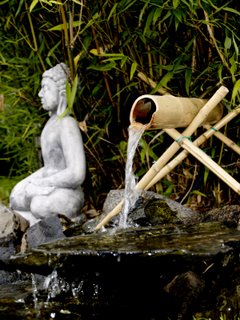 stillness practice “We are all looking for the peace and freedom and security of perfect union with the Atman,” Swami Prabhavananda and Christopher Isherwood write in How to Know God, their classic commentary on theYoga Sutra. “We all long desperately to be happy. But ignorance misdirects us. It assures us that the Atman cannot really be within us, that we are nothing but individuals, separate egos…. We seek security in the accumulation of possessions, or by the destruction of our imagined enemies. We seek happiness through sense gratification, through every kind of vanity and self-delusion. We seek peace through the intoxication of various drugs. And in all these activities we display an energy of heroic proportions…. It is tragically misdirected energy. With less effort, we might easily have found union with the Atman, had we not been misled by our ignorance.”
The good news is that this veil of ignorance is readily lifted. Experiencing Consciousness is simplicity itself, the sages tell us—after all, it is our own true nature. As the 14th-century master, Vidyaranya Yati put it, “You are whatever you know yourself to be. This is a simple law. Brahmavit Brahmaiva bhavati. The knower of Brahman becomes Brahman. The moment you know that you are inseparable from Universal Consciousness, you become that Universal Consciousness.” Five centuries later, Swami Vivekananda put it another way: “The moment I have realized God sitting in the temple of every human body, the moment I stand in reverence before every human being and see God in him—that moment I am free from bondage, everything that binds vanishes, and I am free.” My own teacher, Swami Rama, had another way of expressing it: “It’s as simple as flipping a light switch. Suppose this room is kept dark for one hundred years. How long will it take to light this room? One second.”
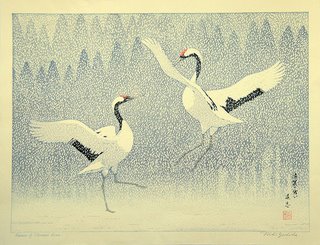 sousaku hanga woodblock print by Yoshida Toshi (ca 1970's Swamiji’s spiritual heir, Pandit Rajmani Tigunait, takes the same view, as I discovered one winter morning while complaining to him about feeling spiritually stuck. Panditji leaned forward, took my face in his hands, and turned my head a few degrees. “It’s right there,” he said forcefully. “There! Adjust your gaze a fraction, you’ll see it. Everything is Consciousness. Everything!”
Most of us don’t see it—at least not at first and not easily. It’s like an Escher print. First you see one thing—black ducks flying across a white sky—and then your perspective shifts a hair and you are looking at a picture of white fish swimming through black water. Once you’ve seen the fish, you see them every time you glance at the print. Spiritual teachers say that the unity underlying the apparent diversity is like that—palpable, obvious, and undeniable. The trick is to learn to refocus our gaze.
To do that, it helps to know what we’re attempting to see. The image on the opposite page seems unremarkable, but if you know it’s a stereogram, you will study it more closely. Look at it long enough and in the right way, and the bees recede into the distance and the hummingbirds float across the page in three dimensional rows. That’s what meditation is, looking within from the right angle often enough and long enough for the illusion of separateness to drop away and Reality to snap into focus.
Swami Rama was fond of saying, “It is easy to meet that Infinity within you—to attain that awareness, you just have to be silent.” It’s easy. Sit down, close your eyes, draw your attention inward, quiet your mind, and you are “There”—at least in theory. For most of us, the experience of meditation is quite different. We sit down, close our eyes, draw our attention inward, and come face-to-face with a noisy, scattered, unruly mind. We mean to focus on the mantra but find ourselves composing the grocery list instead; the mind jumps to the day ahead or the upcoming weekend, the vacation we’d like to take or the one we just had; it busies itself sorting through the latest dustup at the office, skitters through the mess in Iraq, then slides off into what we’re getting the kids for Christmas. Silence eludes us—and so does an awareness of Infinity.
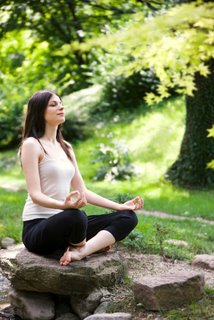 stillness It’s the classic chicken-and-egg dilemma. The experience of Oneness is the fruit of a disciplined meditation practice. But a disciplined meditation practice unfolds from a taste of that fruit. Once it’s had a taste of Unitary Consciousness, the mind is drawn to it like a bee to a blossom and is no longer so easily distracted when we sit for meditation. But without that initial taste, we’re at a bit of a loss. We believe—or would like to believe—what the scriptures, the sages, and our teachers tell us: that we are inextricably entwined in a nourishing web of Consciousness. But our day-to-day experience is quite different—we’ve become accustomed to a vision of duality, trained to see ourselves as separate from each other and from the natural world, and so that’s what we see. We’re seeking a deeper, richer vision of ourselves and our world but we don’t quite know how to bring it into focus.
It came into focus for Edgar Mitchell when he was 240,000 miles out from Earth, seeing his home planet cradled in a nest of stars. His work was essentially finished, the moonwalk had been a success, and he had time to reflect on the mission, time to “absorb the magnificence and beauty of the whole process.” As he explained it in an interview with The Monthly Aspectarian, as a result of “seeing Earth as it is in the heavens, the precise experience for me was to recognize that the molecules of my body and the molecules of the spacecraft—I had studied stellar formation and knew how the furnaces of the stars and galaxies created our chemical elements—I suddenly realized that those were my molecules being manufactured and prototyped in those stars. Instead of being an intellectual experience, it became a very deep, personal, emotional one, a knowing. It was such a profound experience that I went into a different realm of seeing things.”
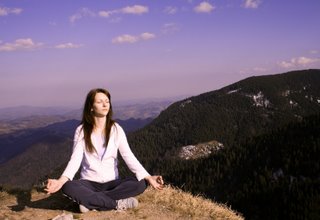 Meditation on the mountain I had a similar experience during a pilgrimage to Kedarnath, a shrine high in the Himalayas. Much less arduous than a journey to the moon, pilgrimage is a time-honored way of cultivating an expanded vision. Step away from the demands and distractions of daily life, leave the familiar behind, and go—deliberately and with determination—to a place known for its spiritual energy. Pandit Rajmani explains it this way: “If you are seeking a certain kind of knowledge and experience, go to a place where it is readily available. If you are seeking knowledge and experience in technology, go to MIT. If you are seeking an experience of the inner dimension of your life, go to a place charged with spiritual energy. When you go to such places with the intention of connecting yourself to the flow of all-pervading Consciousness, your individual consciousness is expanded and transformed by the collective consciousness which permeates that place.”
Mecca, Jerusalem, Assisi, Banaras, Allahabad, Mount Kailash, Mount Fuji, and Mount Kilimanjaro are among the places Consciousness has shaped in Her own image. Here at these and other shrines, the perceived barrier between the physical realm and the subtle realm thins to the point of transparency, and the all-embracing matrix of Consciousness shines through.
I caught a glimpse of it last summer in the Himalayas. From the moment I began the nine-mile climb from the village of Gaurikund to Kedarnath, I was flooded with joy. Everything was perfect—sunlight on thickly wooded hillsides, snowcapped peaks framed by impossibly steep gorges, waterfalls spilling down at every turn, a chilly afternoon rain, the blister on my right heel, a trail that got rougher and steeper as the day wore on, the clammy guesthouse, even the cold-water-only shower. During the two days we stayed on the Kedarnath plateau and through the long walk back to Gaurikund, perfection reigned.
Nothing I did, nothing anyone around me did, could dislodge the all-encompassing beatitude. On the trek back, I deliberately brought things to mind that had been troubling me before I set foot on the trail—my mother’s slide into dementia, a financial snafu, a friend’s duplicity—but they had lost their sting. Everything I knew, remembered, or could imagine was supported and nourished by a munificent web of Consciousness.
For three days, I saw it and felt it. The feeling has faded, but the memory remains. And it is that memory that pulls me into meditation practice, erasing much of the tendency to distraction. My mind settles and moves toward silence more readily now. It hasn’t become as easy as flipping a switch—not by a long shot—but having walked in the light, however briefly, I have come to understand why Swami Vivekananda said: “We put our hands over our eyes and weep that it is dark.”
Deborah Willoughby is the founding editor of Yoga International.
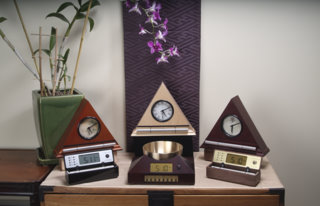 Yoga and Mediation Timers Now & Zen
1638 Pearl St.
Boulder, CO 80302
(800) 779-6383
Posted in Meditation Timers, Meditation Tools, mindfulness practice, Natural Awakening, nature
 Sweetest Sounding Alarm Clocks with Persistent Singing Bowl Chime Chime Zen Alarm Clocks with Tibetan-Singing Bowl deliver the Sweetest, Most Persistent Sounds that are Unique and Acoustic
What makes this gentle awakening experience so exquisite is the sound of the natural acoustic chime, which has been tuned to produce the same tones as the tuning forks used by musical therapists. According to the product’s inventor, Steve McIntosh, “once you experience this way of being gradually awakened with beautiful acoustic tones, no other alarm clock will ever do.”
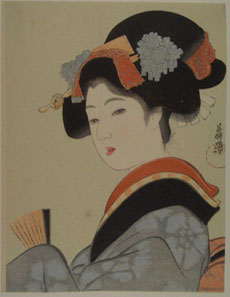 Elegant Women. Courtesy of the Japan Ukiyo-e Museum Now & Zen – The
Gradual Chime Alarm
Clock Store
1638 Pearl Street
Boulder, CO 80302
(800) 779-6383
Posted in Chime Alarm Clocks, Natural Awakening, nature, Now & Zen Alarm Clocks, wake up alarm clock
 Turn your home into a sanctuary By Sherri Silverman
In dreams, homes are often symbols of our physical bodies. In Vastu, the “yoga of design,” the structure of our homes is representative of our own bodies: what goes on in one affects the other, and our own little universes of body and home embody the same forces that compose the vast universe. In fact, Mayan (according to legend, the originator of Vastu knowledge some 10,000 to 14,000 years ago) is said to have coined the aphorisms “As in macro, so in micro,” and “As above, so below.”
Vastu is a scientific and spiritually based system of design for all kinds of buildings: temples, businesses, homes. It creates dwellings in which prana (subtle, universal life-force energy: what Chinese systems of feng shui and Oriental medicine call ch’i) flows freely and there are no structural elements that predispose us to illness or problems in life. Buildings constructed according to true Vastu are conducive to good health. The principles of Vastu can also be applied to rectify energy imbalances in existing homes and create the peace and stability we need to have success on all levels, spiritual and material.
Knowledge of Vastu traveled from India along the Silk Road and on sea routes with merchants and monks. It influenced native East and Southeast Asian traditions, as did other fields of knowledge from India: Hinduism, Buddhism, Jyotish (Vedic astrology), and Ayurveda. There are even legends that Buddha himself traveled to East and Southeast Asia and could have brought India’s great knowledge systems with him. Emperor Ashoka, a famous convert to Buddhism, sent specialists in India’s traditions to Southeast and East Asia to meet local practitioners, find their indigenous traditions, and offer knowledge. These probably brief seminars brought valuable information that melded with the local customs.
Like meditation and yoga, Vastu is universal and useful for people everywhere. It is not a style of architecture or interior design; it is a complete system based on natural laws that can work with your own sense of style and beauty. You can have a Tudor Vastu home or a New Mexico Territorial Vastu home, Spanish Mission–style Vastu architecture, or log cabin Vastu architecture. Likewise, you are not restricted to a particular style of interior design: lots of frills and lace or a stark, Zen-inspired interior can both work within the Vastu framework. Almost all of your individual preferences in color, style, materials, texture, and furnishings can work in a Vastu home or office. As long as it follows the guidelines, is beautiful, and is well constructed with natural materials, any architectural style or design scheme can work with Vastu.
Meditation connects us with the source of pure consciousness; Vastu enhances this effect and connects us with the source through proper design. As a result, it is particularly relevant to people who practice meditation and yoga. Anyone, however, can benefit from applying some Vastu to their home. Here are a few guidelines that will help you turn your home into a yogic sanctuary.
The Five Elements: Panchabhutas
The principles of Vastu connect the dweller of the Vastu home with the subtle laws of nature, such as the energy grid of the earth, beneficial earth energies, and cosmic energies from the sun. They also align the home with the five elements of earth, water, fire, air, and space, which are called panchabhutas in the Vedic tradition. Each of these five basic elements is energetically associated with a particular direction. This is not an arbitrary assignment but an acknowledgement of the subtle laws of nature. By honoring the various elements and their primal energies, we are in greater harmony with nature. This results in greater harmony and ease in our lives.
Earth: bhumi or prithivi
The earth element is associated with the southwest direction, the best choice for the location for the master bedroom. Earth is a solid, dense, and grounded element. We all need a physical basis or foundation to survive in this world. Plants, trees, soil, rocks, and mountains represent the earth element.
Water: jala
Northeast is the direction where the energy waves of the water element collect. This makes it the best placement for indoor and outdoor water features: swimming pools, fountains, ponds, waterfalls, and aquariums. Water is frequently used as a metaphor for pure consciousness in the Vedic tradition.
Fire: agni
The fire element is predominant in the southeast, so it is the best placement for kitchens, fireplaces, computers, and other electrical equipment. Digestion in the body and transformation are also the realm of agni. To add and honor this element, light fires. Enjoy an indoor or outdoor fireplace in the southeast, and light non-toxic candles made of beeswax.
Air: vayu
The air element is liveliest in the northwest, so put fans, wind streamers, mobiles, wind chimes, and air purifiers here. The concept of movement in general is associated with this element and its direction. To reap the benefits of the prana in the air, learn and practice pranayama (yogic breathing techniques), preferably with windows open enough to bring fresh air into the room. Be sure that the air in your home is fresh. If your home has stagnant areas, you can use fans to keep the air moving.
Space: akasha
This element is directly linked to sound and silence. Akasha (sometimes called “ether”) is the expansiveness in the center of the architectural form and in the center of each room, the element of “energetic and dynamic space.” The center of the building and each room is called the Brahmasthan. It is the interface between the seen and the unseen, the manifest and the unmanifest. Honor the Brahmasthanby keeping it clean and clear, a revered open space. Don’t put heavy objects here.
Vastu expert Sherri Silverman, PhD, is the founder of Transcendence Design. This article is adapted fromVastu: Transcenden-tal Home Design in Harmony with Nature by Sherri Silverman. © 2007 by Sherri Silverman. Reprinted with permission of Gibbs Smith.
One of the ultimate Zen like experiences is waking-up from a great slumber refreshed and energized. Your mind and body are harmoniously one, both alert and focused. Having a refreshed mind and body are two keys to a natural and Zen lifestyle. Waking up in the morning should not be a loud and abrupt awakening, but rather it should be a peaceful positive experience. The right natural alarm clock can transition your deep and tranquil sleep into a serene start to consciousness. Imagine a long-resonating Tibetan bell-like chime waking you up to a beautiful morning experience.
The right alarm clock can be the most beneficial investment for you. With our Now & Zen natural alarm clock you are awakened more gradually and thus more naturally. Now & Zen is focused on creating a naturalistic lifestyle, and our clocks are an example of our philosophy.
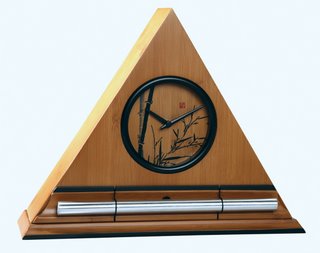 Bamboo Chime Clocks by Now & Zen Now & Zen – The Gradual Chime Clock Store
1638 Pearl St.
Boulder, CO 80302
(800) 779-6383
Posted in Chime Alarm Clocks, nature
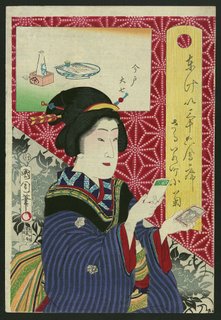 Toyohara, Kunichika, 1835-1900 7 Sources of Prana
By Sherri Silverman
1. An open window in the northwest, the quadrant where the air element is predominant
2. A vamsa danda, or spine of light, running unobstructed from the front door straight through the house to a back window or door
3. An open Brahmasthan (the center of the building) to allow the structure to generate prana from the middle of the house
4. Live plants and flowers in the house; outdoor gardens
5. Meditation and healing breath techniques
6. Fresh, organic foods in the kitchen (ideally, harvested from your garden or local farmers’ market)
7. Water elements such as fountains and aquariums, which replicate streams, waterfalls, lakes, oceans, etc.
 Natural Chime Alarm Clocks with Real Acoustic Sounds Now & Zen
1638 Pearl St.
Boulder, CO 80302
(800) 779-6383
Posted in mindfulness practice, nature
 stillness practice By Sherri Silverman
The Power of Meditation
Meditation and other spiritual practices are basic to enhancing energy—they create balance and improve the quality of your home or office. In fact, the best thing you can do besides building according to Vastu to improve the supportiveness of a space is to do spiritual practices (sadhana). Prayer, meditation, yoga, chanting, and pranayama all enliven a space.
Be consistent with the spiritual practices of whatever tradition you are drawn to. As the Sufi poet Rumi said, your true home is within and reachable by letting go and allowing the mind to go inward. When we feel at home within ourselves and within our own hearts, any building we live in will feel more serene and supportive. Meditation practices make us more perceptive of our environment, so that we intuitively know many of the changes to make. We become more in touch, literally and metaphorically. According to Vastu, the northeast or the center of the home is the best area for meditation rooms, spiritual altars, and yogic practices.
Vastu expert Sherri Silverman, PhD, is the founder of Transcendence Design. This article is adapted fromVastu: Transcenden-tal Home Design in Harmony with Nature by Sherri Silverman. © 2007 by Sherri Silverman. Reprinted with permission of Gibbs Smith.
 Meditation Tools and Timers with Bowl Gong Now & Zen
1638 Pearl St.
Boulder, CO 80302
(800) 779-6383
Posted in Chime Alarm Clocks, Natural Awakening, nature
 Warm winter sun Winter solitude–
in a world of one color
the sound of wind.
by Matsu Basho
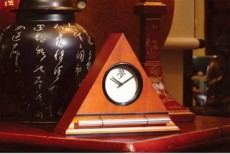 Chime Alarm Clock Now & Zen
1638 Pearl St.
Boulder, CO 80302
(800) 779-6383
Posted in Goodness, nature
 moon viewing occasional clouds
one gets a rest
from moon-viewing
by
Matsuo Basho
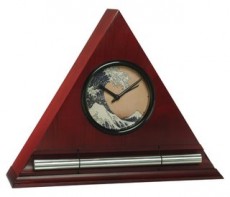 Wave Dial Face Now & Zen
1638 Pearl St.
Boulder, CO 80302
(800) 779-6383
Posted in nature
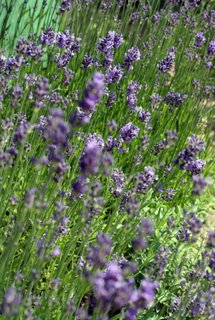 lavendar The best herbs to relax after the holiday season.
Shopping, relatives, money—stress. The holiday season is supposed to be a time of joy, but it can also be exhausting. We asked some herbalists and health-care providers to suggest ways to relax after the holidays.
Relieve tension by filling a sachet with dried hops. Tuck it next to your pillow and settle down for a peaceful sleep. The aroma of hops is mildly sedative.
—Portia Meares, herbalist and author, Wolftown, VA
Unwind by soaking in a bath scented with a few drops of lavender oil.
Curl up with a cup of lemon-balm tea. Place 1 tablespoon of the dried herb in a tea ball, drop it in a teacup, add hot water. Set your Zen Timer with Chime and steep for 10 minutes.
Escape to a sunny vacation spot where you can relax in seclusion. People should vacation in winter, rather than summer; sunny weather gives people stamina to juggle busy schedules, while cold, short winter weather depletes energy.
—Paul Bergner, clinic director at the Rocky Mountain Center for Botanical Studies, Boulder, CO
Nourish the nervous system with herbal adaptogens such as oat seed. This herb contains alkaloids, believed to protect and rebuild the myelin sheath surrounding nerve cells. Take 30 drops of the extract twice a day.
Inhale the calming scent of rosemary essential oil. Mix a few drops into hand lotion or place a drop or two on a cotton ball.
—Feather Jones, practicing herbalist and owner of Turtle Island Herbs, Boulder, CO
 Zen Alarm Clock with Gentle Chime for Stress Reduction
Now & Zen
1638 Pearl Street
Boulder, CO 80302
(800) 779-6383
Posted in intention, nature, Now & Zen Alarm Clocks, wake up alarm clock
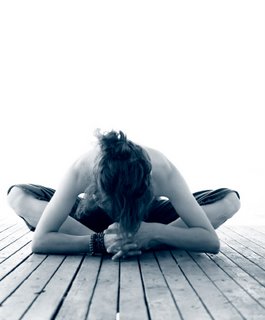 what energizes me? Universal fixes help, but managing your energy levels can also be a very personal process. Here’s what some whole-living luminaries do to recharge:
“To paraphrase Thoreau, my tonic is the wilderness. When I am low on energy, I go to nature, and it restores me every time. Whether I’m sitting next to a lake or canoeing in it, just being in a place where plants thrive feeds my energy.”
–Rosemary Gladstar, herbalist, teacher, and founder of United Plant Savers
“Doing deep yogic breathing, Sun Salutations to fun and upbeat rock music, and inverted poses like handstands get me going. Plus, I conserve my energy and redeploy it into the priorities of what must be done, cutting out all extraneous activities, like internal dialogue (negative and overwhelming banter), anger, frustration, and fears.”
–Ana Forrest, yoga pioneer and creator of Forrest Yoga
“My dogs walk me twice a day, and they’re the best energizer I know. There’s nothing like getting out in nature with two joyous beasts who don’t have to think twice about the meaning of unconditional love, both for me and the trail, however well beaten a track it is.”
–Kenny Ausubel, founder of the Bioneers Conference and co-executive director of the Collective Heritage Institute
 wilderness is a tonic “A frothy cup of green matcha tea and some breathing exercises help get me energized, as does an invigorating swim in my pool. Plus, looking forward to something with excitement always motivates me.”
–Andrew Weil, M.D., author of “Healthy Aging” and editor of Dr. Andrew Weil’s Self Healing Newsletter
“I love my work and get pulled in by endless to-do’s, often chugging along until I’m exhausted and ‘too-done.’ While exercise, yoga, and meditation help keep my energy high, so do regular breaks from the usual routine. I keep my knitting bag, beading box (I love to make malas and prayer bracelets as gifts), and a fast-paced mystery novel handy for 10- to 15-minute breaks three or four times a day. Letting go of responsibility to bask in creativity, or to drop into a fictional world very different from my own, keeps the juices flowing.”
–Joan Borysenko, Ph.D., psychologist and best-selling author of 12 books, including “Saying Yes to Change”
adapted from Body + Soul, September 2006
 Bamboo Zen Timer and Natural Alarm Clock with Gentle Chime Now & Zen
1638 Pearl Street
Boulder, CO 80302
(800) 779-6383
Posted in intention, Meditation Timers, Meditation Tools, mindfulness practice, nature, Walking Meditation, Well-being, zen
 be one with nature “Thoreau said that nature is a tonic for the soul,” says renowned herbalist Rosemary Gladstar, author of “Rosemary Gladstar’s Herbal Recipes for Vibrant Health,” and it’s equally nourishing for the body. “I think disconnection from the natural world is the cause of most of our health problems. We need nature to feel whole.” Taking a daily walk “offers a dose of the best medicine,” says Gladstar. “Get out in the woods if you can, but even a city park will do the trick — anywhere there’s earth and sky and plants and maybe a little water. Let the wind wash your troubles away. You’ll feel great. Your soul will eat it up.”
adapted from Body + Soul Magazine
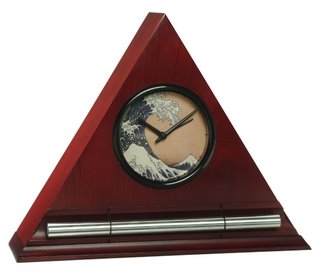 Hokusai Wave Zen Alarm Clock Now & Zen
1638 Pearl Street
Boulder, CO 80302
Posted in intention, mindfulness practice, nature
« Previous Page
Next Entries »
|
|
|
|